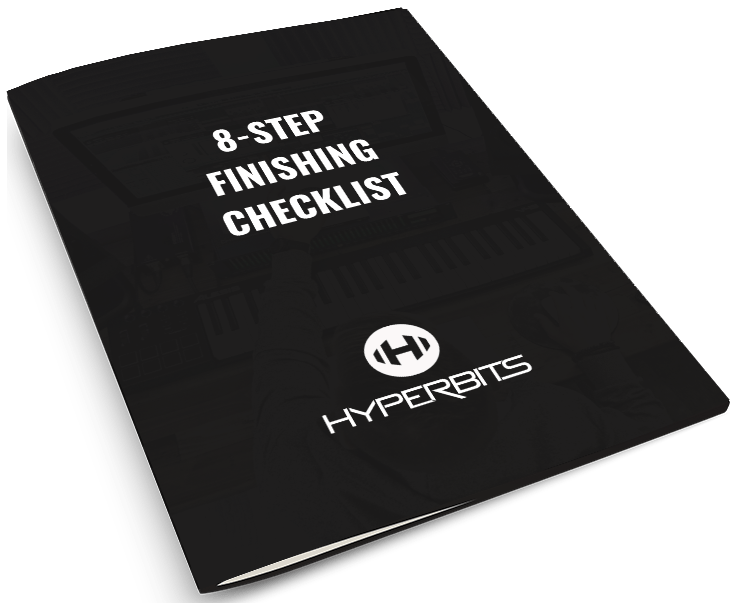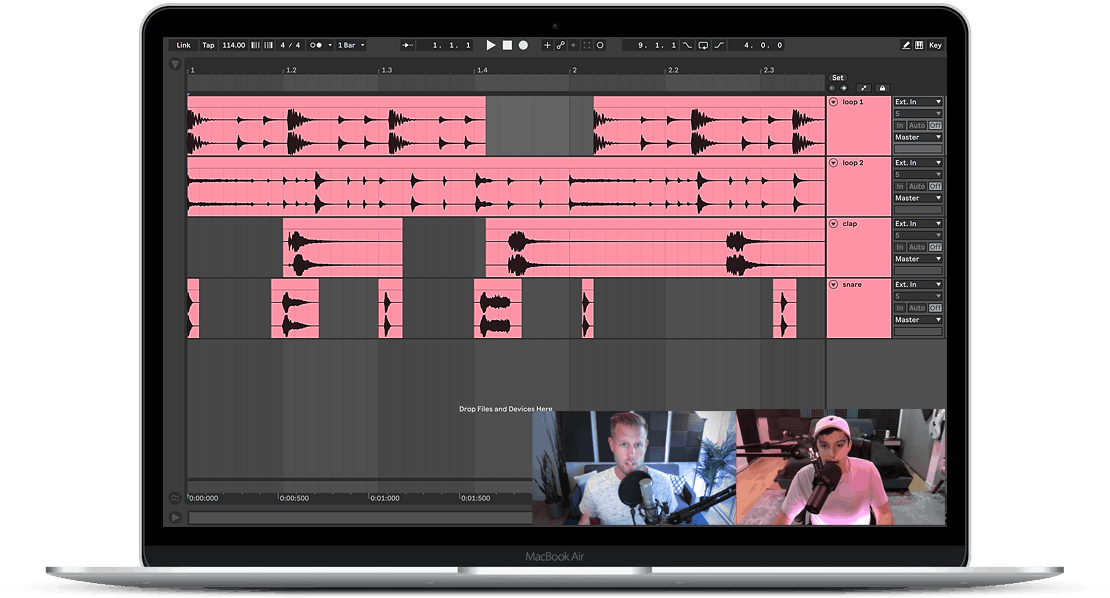What is Music Publishing? Defining Licensing, Placements & Syncs
“Art washes away from the soul the dust of everyday life.”
— Pablo Picasso
What is music publishing, and why is it important? The music industry can feel like a complex web that spins your head. Although it seems daunting, it’s important to understand how you can make an income from your music. Music publishing is just one crucial one.
Here, you’ll learn the intricacies of music publishing, why you should care about it with your music and concepts like sync placements and licensing music. You’ll have a complete guide to understanding music publishing at the end.
Music Publishing
Let's clarify the distinction between music composition royalties and master royalties. When you create and release a song, there are two ways you can earn money from it: through the composition and the master recording.
The master recording is the final version of your song that you export from your music software (DAW) and upload to platforms like Spotify. This digital file is considered the "master recording" from a music business perspective.
On the other hand, your fans are also experiencing another aspect when they listen to your music – the music composition itself. This includes the melodies, chords, lyrics, and overall musical content of your song.
When your fans listen to your music on platforms like Spotify or Apple Music, you receive royalties twice – once for the master recording and again for the composition.
However, there are cases where you would only be paid for the composition, not the master recording. One example is when someone decides to create a cover of your song.
For instance, a singer/songwriter may hear your song, feel inspired, learn it, and then record their version with their unique interpretation. In this situation, they are not using the original master recording of your song. As a result, you, as the original songwriter, would collect royalties for the composition of their cover, while the cover artist would collect the master royalties.
I’m sure you’re thinking to yourself, “this is complicated…” and trust me it is. Hopefully, the rest of this article will clarify a lot of this, but we’ve made a simple graphic for you to follow as well in case you get lost.
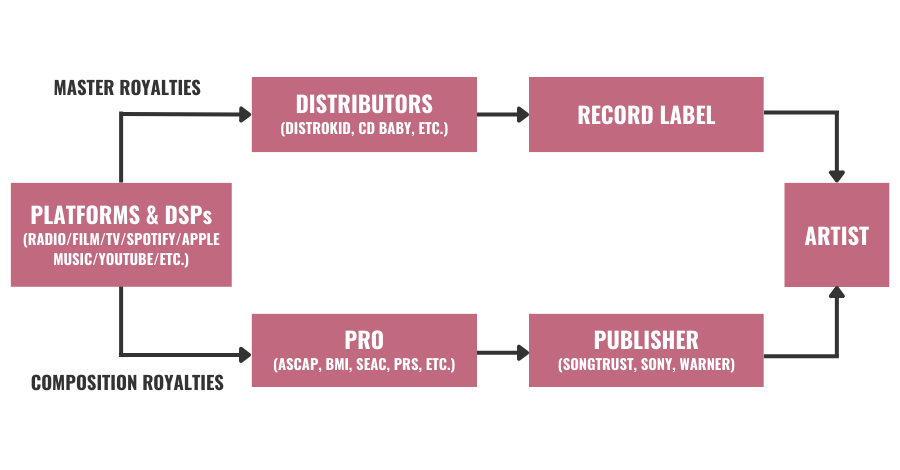
Another great example of master vs. composition in music is what happened with Taylor Swift when she started re-releasing her old albums as “Taylor’s Versions.”
A few years ago, Taylor Swift’s record label decided to sell her catalog to a new record label. This new label would then start collecting royalties on her music. However, Taylor was not pleased with who this new owner was and couldn’t stomach this entity collecting money off of her work.
Luckily for Taylor, the contract agreement on her catalog that was sold only controlled the “master recordings” of her music. The actual music composition in the songs was still fully owned by Taylor.
So she decided she wanted to remove this new catalog owner from her work by re-recording albums. So she did just that, using the same instruments, recording methods, and more to replicate her old master recordings closely.
Thus, we get an album like “Red (Taylor’s Version).” Since this album are all fresh new recordings (even though it sounds very similar to the original masters), she collects both the master and composition royalties on this new “Red” album. At the same time, it dilutes the value of the old “Red” album, taking royalties away from her hated catalog owner. Badass, right?
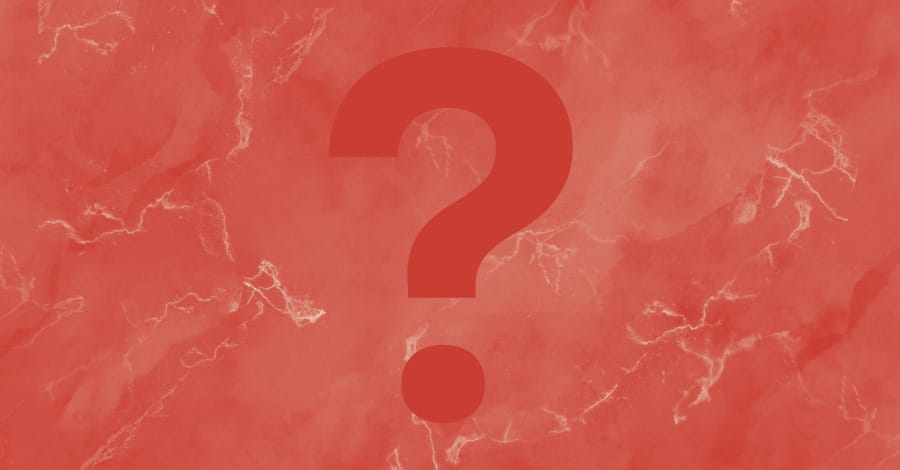
Music publishing is a big aspect of the music industry. It involves the management, protection, and monetization of musical compositions. Put simply, it refers to the administration of copyrights and the licensing of songs.
While songwriters focus on creating music, music publishers specialize in the business side of things, ensuring that the creative work is protected and generating revenue. Music publishers play a pivotal role by connecting songwriters with various opportunities and helping them maximize their earnings.
They can act as intermediaries between songwriters and other entities, such as record labels, film and television producers, advertisers, and streaming platforms. The key functions of music publishers include copyright administration, royalty collection, licensing negotiations, and synchronization placements.
Copyright administration involves registering compositions with copyright offices, managing intellectual property rights, and ensuring that proper credits are given to songwriters. Royalty collection entails tracking and collecting royalties from various sources, such as performance rights organizations (PROs), streaming services, and radio stations.
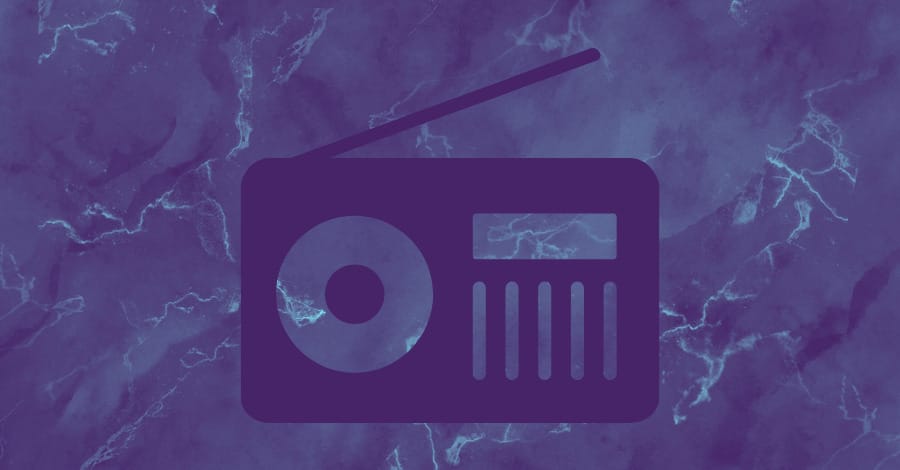
PROs (Performance Rights Organizations) handle the collection and distribution of performance royalties to songwriters and publishers. Two prominent PROs in the United States are ASCAP (American Society of Composers, Authors, and Publishers) and BMI (Broadcast Music Inc.). These PROs represent a vast catalog of music across genres and have a long-standing reputation for their comprehensive licensing and royalty distribution services.
PROs like ASCAP and BMI ensure that songwriters receive fair compensation when their compositions are publicly performed or broadcast, providing valuable support and advocacy in the music industry. We at Hyperbits are personally affiliated with BMI.
But the PRO landscape isn’t limited to just these two PROs. ASCAP and BMI are US-based and generally serve US citizens. Artists from other countries can affiliate with these PROs but it may be more advantageous to affiliate with a PRO more local to your region. Here’s a full list of PROs sorted by country.
As an artist, it’s up to you to decide which PRO you want to be affiliated with. Their differences are minimal, but it’s important to do your research. Your relationship with your PRO will likely be a long-term one, so it’s worth doing due diligence up front and understanding the pros/cons of each relevant organization to you.
Licensing in Music Publishing
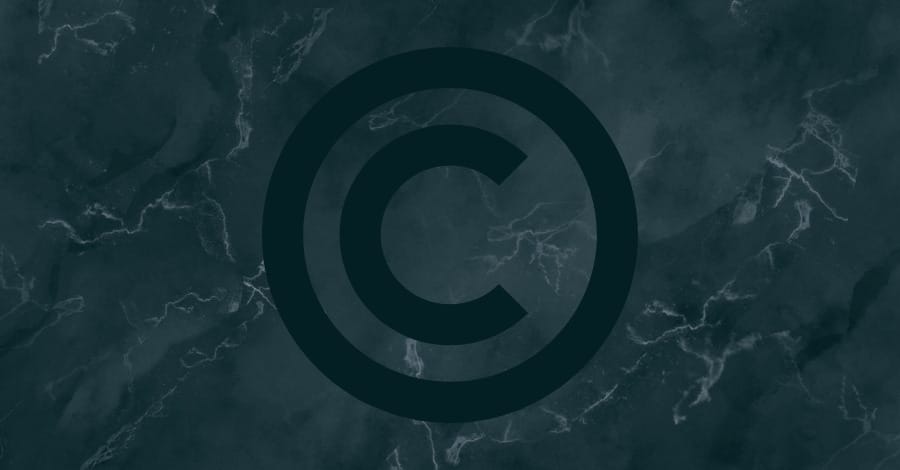
Licensing, in the context of music publishing, refers to the granting of rights and permissions to use a music composition in various ways. It involves obtaining legal authorization from the copyright holder, typically the music publisher or artist, to use the composition for specific purposes. Licensing protects both the creators and the users of the music.
The 3 Main Types of Licenses
There are several types of licenses in music publishing. 1. Mechanical licenses are required for reproducing and distributing musical compositions, such as when a song is recorded and released in a physical or digital format.
2. Synchronization licenses allow music in combination with visual content, such as in films, TV shows, advertisements, and video games. 3. Performance licenses are necessary for public music performances, including live performances, concerts, and radio broadcasts.
Why is Licensing Important for Artists?
The licensing process involves negotiating the terms, fees, and duration of the license agreement between the copyright holder and the party seeking to use the music. It requires legal documentation and a mutual understanding of the rights being granted.
The significance of licensing cannot be overstated, as it ensures that artists and music producers are fairly compensated for using their creative works while providing opportunities for exposure and promotion.
For artists and music producers, licensing offers a means to generate revenue and reach wider audiences. It expands their fan base and increases their visibility in the industry. Moreover, licensing agreements often involve royalty payments, ensuring artists and music producers receive compensation when their compositions are used commercially.
For media platforms and content creators, licensing grants them access to high-quality music, enabling them to enhance their productions and create engaging experiences for their audiences, all while respecting the rights of the music creators.
Sync Placements in Music Publishing

Sync placements refer to the “synchronization” of music with visual content such as films, TV shows, advertisements, video games, and online videos. Music with visual content enhances the emotional impact and storytelling.
Synchronization licenses allow a person or business to use a musical composition with visual media. It is a complex and highly sought-after aspect of music publishing. When a sync placement occurs, there is usually a high payout for the artists who made the song.
Sync placements can take various forms, including film scores, background music for TV shows, theme songs for advertisements, and soundtracks for video games. These visual content creators are seeking to create a memorable moment in their material and add emotional depth. So they are pretty adamant about selecting the best music for their content.
How Are Sync Licenses Negotiated?
Negotiating a sync license involves careful consideration of the specific requirements and creative vision of the visual content, ensuring that the music aligns with the desired mood, tone, and narrative.
Successful sync placements can lead to significant exposure for artists, increased music sales or streaming laterally, and potentially open doors to further opportunities in the entertainment industry.
Sync placements can be highly lucrative for music creators. The fees associated with sync licenses can vary widely depending on factors such as the scope of usage, prominence of the visual content, and exclusivity of the agreement.
Additionally, royalties may be generated through performing rights organizations (PROs) when the synchronized music is publicly performed or broadcast. Essentially, even more money for you.
Sync placements allow artists to gain recognition and earn substantial income from their creative works, making them an important revenue stream.
The Role of Music Publishers in Licensing, Placements & Syncs
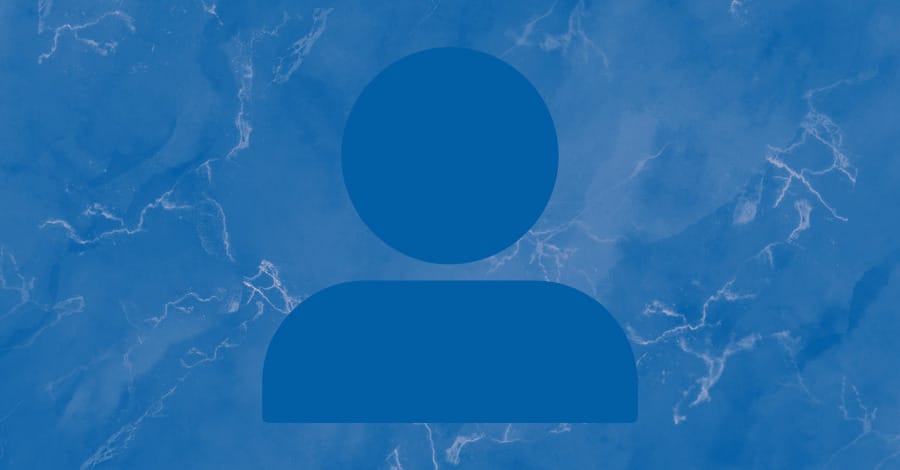
Music publishers are pivotal in managing licensing, placements, and syncs as crucial intermediaries between songwriters, composers, and the entities seeking to use their music. They bring immense value to the table by handling the administrative, legal, and financial aspects of the music business, allowing creators to focus on their craft.
One of the primary services provided by music publishers is managing licensing agreements. They navigate the complex licensing landscape, negotiating terms, fees, and durations to ensure that the rights of the copyright holders are protected while granting appropriate permissions for the use of musical compositions.
By handling mechanical, synchronization, and performance licenses, music publishers enable artists to monetize their works more lucratively.
Music publishers also excel in securing placements and syncs for their catalog of compositions. They actively seek opportunities for their songwriters and composers to have their music featured in films, TV shows, commercials, and video games.
Through their extensive industry connections and expertise, music publishers can identify the right fits for specific compositions, aligning them with the creative vision of visual content and maximizing exposure for music creators.
Partnering with a music publisher brings several benefits to artists and composers
First, publishers provide valuable guidance and support in navigating the complex music industry landscape. They offer expertise in copyright administration, royalty collection, and licensing negotiations, ensuring that artists receive fair compensation and their rights are protected.
Music publishers also provide access to an extensive network of industry professionals, opening doors to collaborations, placements, and promotional opportunities.
There are numerous successful music publishing companies in the industry, such as Sony/ATV Music Publishing, Universal Music Publishing Group, Warner Chappell Music, and Kobalt Music Publishing, to name a few.
To get involved with a music publisher, artists and composers can consider submitting their music demos or seeking representation through talent agencies or music industry contacts. Building relationships with music publishers and demonstrating a strong track record of creative work can increase the chances of getting noticed and securing a publishing deal that aligns with their artistic goals and ambitions.
How to Find Sync Opportunities
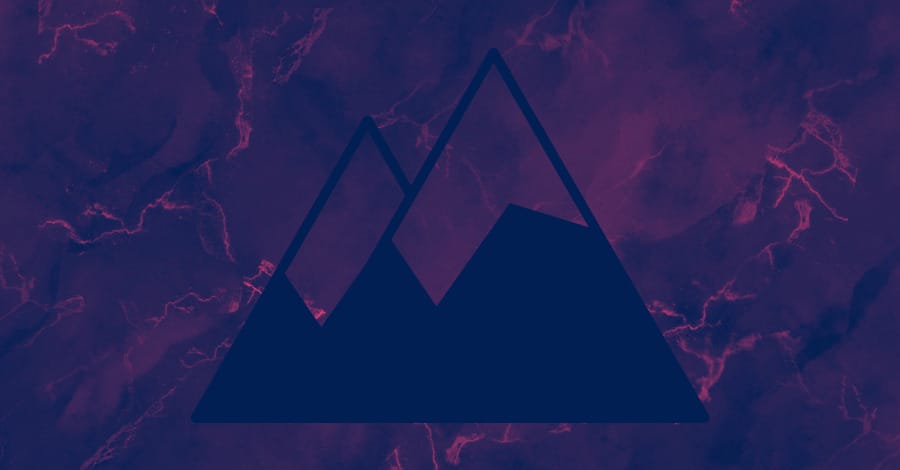
Finding sync opportunities for your music requires a proactive approach and an understanding of the channels through which music supervisors and licensing professionals discover new tracks. Here are some practical ways to increase your chances of securing sync placements:
1. Connect with Music Supervisors
Music Supervisors are professionals responsible for selecting and placing music in visual media. Research and identify music supervisors who work on projects relevant to your genre or style. Networking events, industry conferences, and online platforms like LinkedIn can help you connect with them. Building relationships and submitting your music directly to music supervisors can increase visibility and open doors for sync opportunities.
2. Utilize Music Libraries
Music libraries are platforms that curate catalogs of pre-cleared, licensable music for sync placements. They serve as a resource for music supervisors and licensing professionals seeking suitable project tracks. Examples of popular music libraries include Epidemic Sound, Audio Network, and Pond5. Submitting your music to these libraries can increase its chances of being licensed for sync placements.
3. Explore Online Platforms
Websites like Taxi.com provide a platform for independent artists to submit their music for consideration by industry professionals, including music supervisors. These platforms often offer opportunities for sync placements in various media projects. Research and explore reputable online platforms that connect artists with sync opportunities and submit your music accordingly.
4. Independent Promotion and Networking
Actively promote your music independently through social media, blogs, and online communities. Engage with filmmakers, content creators, and fellow musicians who may be seeking music for their projects. Collaborating with indie filmmakers, offering your music for non-commercial use in student films, or participating in creative competitions can lead to valuable exposure and potential sync opportunities.
5. Be Cautious with Label Agreements
Signing music to labels can affect sync placements. Some labels may have exclusive rights to license your music, limiting your ability to pursue sync opportunities independently. It is crucial to carefully review and understand the terms of any agreements with labels to ensure you retain the necessary rights to explore sync placements.
Remember, persistence and patience are key when seeking sync opportunities. It's essential to continuously create high-quality music, build relationships in the industry, and actively promote your work to increase your chances of catching the attention of music supervisors and securing valuable sync placements for your compositions.
Final Thoughts on Music Publishing
Understanding the world of music publishing, licensing, placements, and syncs is essential for artists and composers looking to maximize their creative potential and generate revenue from their music. By partnering with a reputable publisher and leveraging their expertise, you can access valuable opportunities for exposure and financial compensation.
To increase the chances of securing sync placements, it's important to take action. Start by creating a portfolio of your best music, showcasing your talent and versatility. Register your compositions with a music publisher and performance rights organization (PRO) to protect your rights and ensure proper royalty collection.
Finally, actively submit your music to licensing opportunities, whether it's through direct connections with music supervisors, reputable music libraries, or online platforms dedicated to sync placements.
By taking these actionable steps, you can position yourself for potential sync placements, enhancing your visibility and opening doors for creative collaborations. Remember, persistence and continuous improvement are key in the competitive music industry. Stay dedicated to your craft, build relationships, and explore opportunities to showcase your music.
With a strategic approach and some luck, your compositions could find their way into films, TV shows, advertisements, and beyond, enriching the visual landscape while rewarding you as a talented music creator.
Happy producing!





